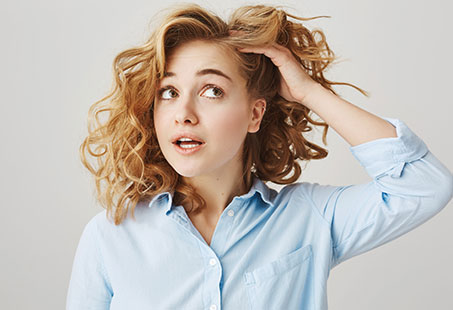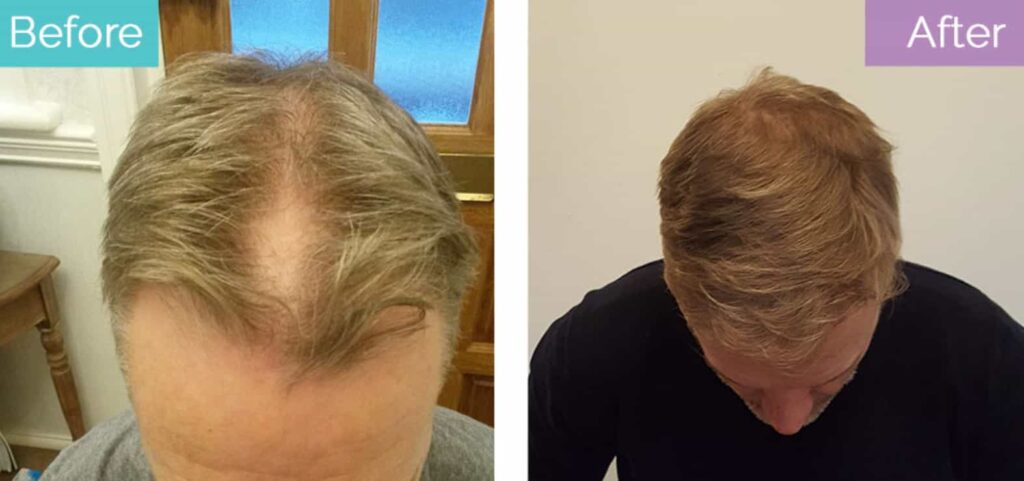Hair loss is a familiar problem for a lot of people. But when it starts to come out in droves, it, naturally so, makes people wonder about the number of hairs in the reservoir.
And you might know already that the hair that you can see on your head isn’t actually even living. It’s all dead cells, and yet it keeps growing because of the root at the base of it (underneath the skin).
But how quickly does the hair exactly grow? Is there anything you can do to speed things up a little? And are there any factors influencing how much hair you have on your head? In this blog, you’ll find the answers to all these questions and more.
How Much Hair Is Usually On Your Head?
There are 80,000 to 120,000 terminal hairs on the scalp of both men and women, according to StatPearls. Terminal hair refers to hair that is thicker, longer and darker as opposed to vellus hair, which is fine, short, and less pigmented. The latter is also referred to as peach fuzz.
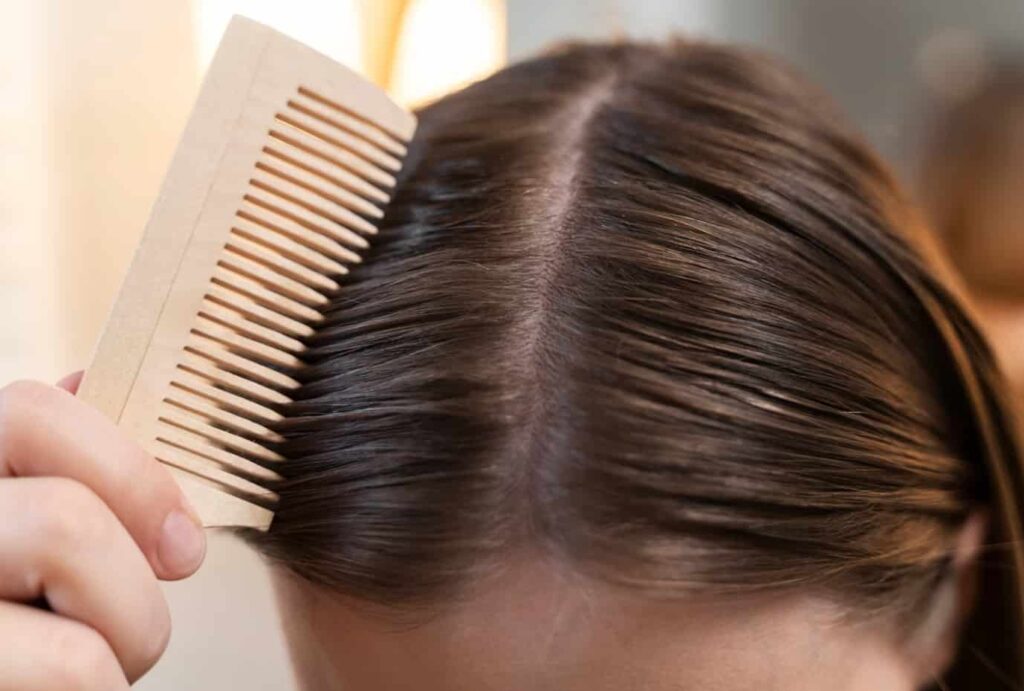
Normally, you mainly have terminal hair on the scalp but that can change. For instance, if you have androgenetic alopecia or pattern baldness, a hormone called dihydrotestosterone (DHT) can cause miniaturisation of the hair follicles. Hair gradually changes from terminal to vellus, and you’ll eventually become bald.
Other than that, you can also get more vellus hair due to the natural process of ageing. It’s known as involutional or senescent alopecia. Congenital triangular alopecia is another type of hair loss in which you can end up with vellus hair.
How Many Hairs Grow On The Human Head A Day?
Human hair grows at the rate of 0.35 mm/day (0.02 inches/day), which is approximately equal to:
- 0.5 inches/month
- 1.25 inches/3 months
- 2.5 inches/6 months
- 5 inches/year
How Many Hairs On A Human Head Do You Lose A Day?
Losing 50-100 strands of hair/day is considered normal. Keeping that in mind, you can lose about 1,500-3,000 hairs in a month and about 20,000-40,000 hairs/year.
But that’s not how it always is. For instance, if you have telogen effluvium, you might end up losing 300 strands of hair/day. Similarly, after pregnancy, you can lose about 400 hair strands in a day.
How Many Hairs Per Cm Are There On The Head?
One study published in Clinical, Cosmetic and Investigational Dermatology found that there are around 147 hairs/cm2 on the scalp (accounting for an error of almost ±8 hairs).
It’s called hair density, which refers to the number of hairs in the cross-section of a scalp. However, this number can vary depending on the:
- Region of the scalp
- Sex of the individual
- Age of the individual
- Ethnicity
The researchers of the same study found that frontal and crown areas had about 144 hairs/cm2 and 147 hairs/cm2, respectively, in both men and women. However, at the back of the head, women had 154 hairs/cm2, compared to 152 hairs/cm2 in men.
The density also progressively decreased with ageing, with it being highest among those between the ages of 18 and 30 (about 150 hairs/cm2) and lowest in those above 50 (about 140 hairs/cm2).
Another study published in Skin Appendage Disorders also found out how hair densities differed between people belonging to different ethnicities. Not accounting for the errors, it found the following:
| Ethnicity | Hair density (hairs/cm2) |
| Caucasians | 214-230 hairs/cm2 |
| Americans of Hispanic descent | 169-178 hairs/cm2 |
| African descent | 148-160 hairs/cm2 |
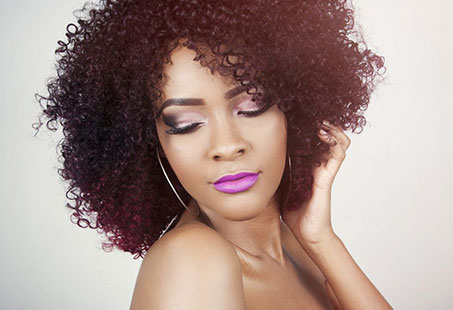
While the hair density of people of African descent might be lower than that of Caucasians or Americans of Hispanic descent, it should be noted that their hair is curlier. And that could mean more coverage from the coils of the hair itself.
How Many Hairs On A Human Head With Thick Hair?
The average number of thick hairs on the human head is 100,000. Terminal hair, by its nature, is thicker compared to thin vellus hair. However, in general, there can be variations in the diameter of the hair, according to:
- Age of the person
- Ethnicity
- Hormonal changes (e.g. in pattern baldness)
- Medications
- Damage from styling
According to a study published in The Journal of Clinical and Aesthetic Dermatology, the diameter or the thickness of the hair increases up until the age of 40, but it starts to decrease after that.
Moreover, the researchers also reported that the thickness of the hair can change depending on the ethnicity of the individual.
| Ethnicity | Hair thickness |
| Asian | 70µm |
| Caucasian | 65µm |
| African | 55µm |
Does Gender Affect Hair Density?
Gender might not have a significant impact on hair density. Research published in BioMed Research International found no difference between the hair density of men and women.
The only difference was between the different regions of the scalp, where the density was highest at the front and lowest in the temporoparietal area (between the crown and the area above the ears).
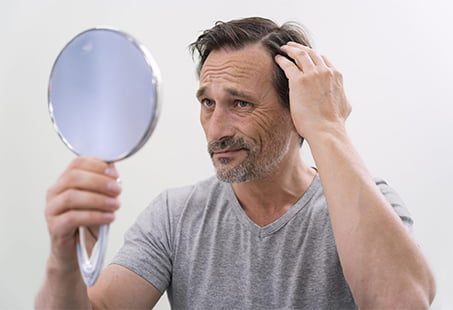
Of course, this is for normal and healthy hair. There are gender-based differences in the hair densities of individuals experiencing pattern baldness. Males are more likely to go bald than women.
What Can Negatively Affect Your Hair Count?
The following factors can negatively affect the number of hairs on the scalp:
- Ageing
- Health problems
- Hormonal changes
- Stress and/or unhealthy lifestyle
- Poor nutrition
- Medications and/or treatment therapies
- Trauma and/or injury
- Poisoning
- Hair damage from excessive styling
Keep in mind that hair loss can be temporary or permanent. Some kinds of temporary alopecias can also become permanent (like traction alopecia). In any case, you must consult your doctor for a diagnosis.
How To Increase Hair Density?
There are different non-surgical treatments like platelet-rich plasma (PRP) injections, low-level light therapy (LLLT), minoxidil, or finasteride and surgical solutions like hair transplant that can help improve your hair density.
Although with a hair transplant, it’s not exactly an overall increase in hair density because the existing hair is essentially redistributed. While that can increase the hair density in the balding areas, it doesn’t increase the overall hair count on the scalp.
Other than that, some people also believe home remedies like scalp massages, oils, and herbs help, but if you’re losing your hair, you must ask your doctor about it.
Simply taking supplements when you don’t have any nutritional deficiency isn’t likely to help you. Your doctor should create a treatment plan for you.
Conclusion
So, how many hairs are there on the human head? Normally, somewhere around 100,000, but that number can change depending on the area of the scalp, health of the individual, gender, ethnicity, age, etc.
Hair loss isn’t always something you need to worry about. You can normally shed about 50 to 100 strands of hair in 1 just 1 day. But if you’ve noticed increased hair shedding, you should talk to your doctor about it.
